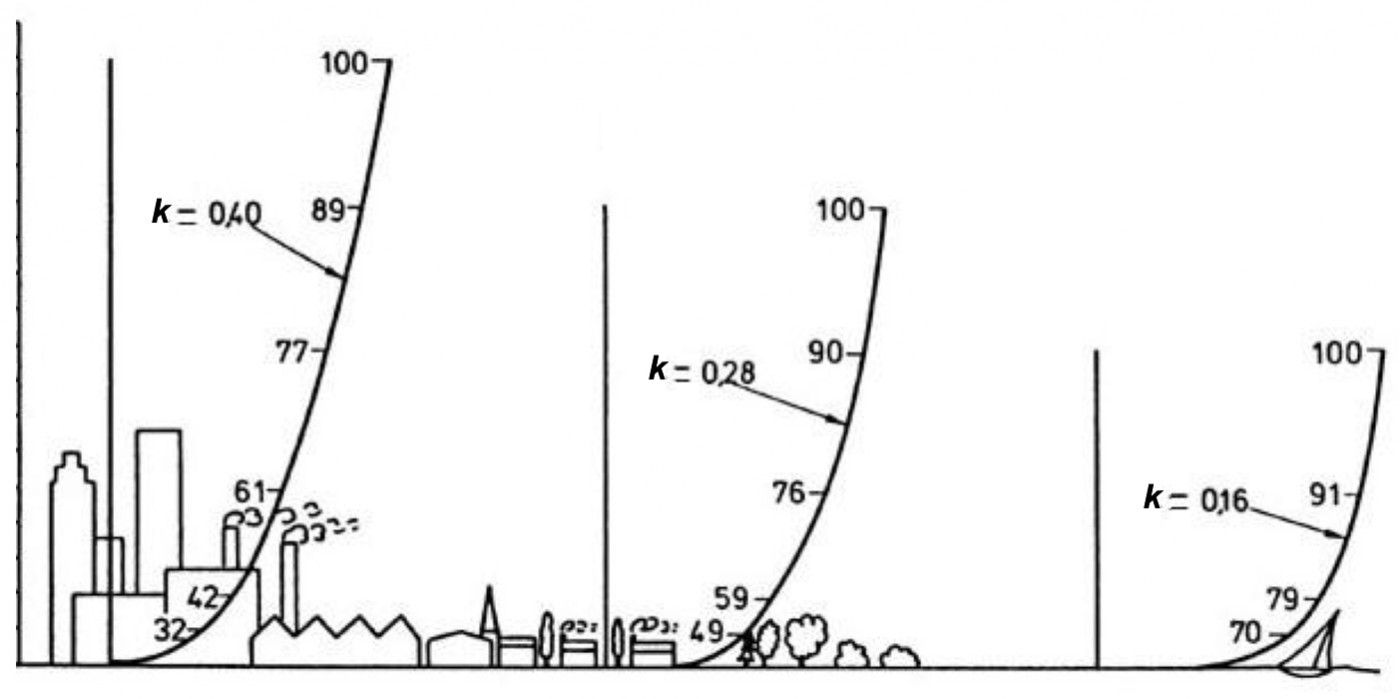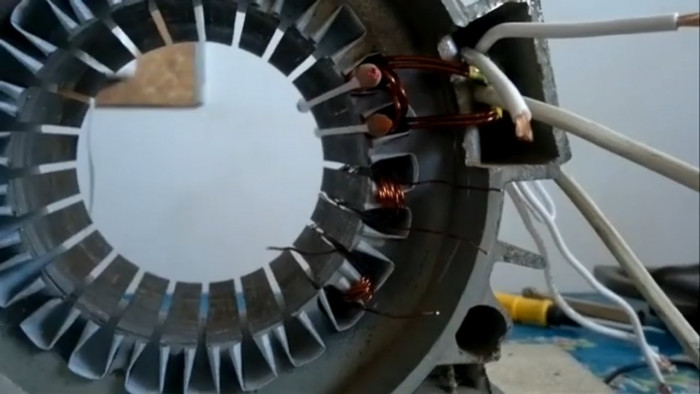
Hydrometeorology divides the atmosphere into the lower atmosphere (troposphere and tropopause), the middle atmosphere (stratosphere, mesosphere and mesopause) and the upper atmosphere. The lower boundary layer of the atmosphere with a thickness of 1000 m to 1500 m (1 - 1.5 km) is called the planetary boundary layer, for which turbulent friction is the determining factor. In this layer, an impulse, heat and moisture exchange takes place between the underlying surface (the land surface and the ocean surface) and the atmosphere.
In aeronautics and meteorology, the air layer up to 50 - 100 meters high is called the surface layer. This is the most unpredictable and the most difficult layer in terms of determining air flows, it is here that the processes of the exchange of momentum, heat and moisture proceed most actively. And at the same time, this layer is the most interesting for wind energy.
Almost all “windmills” are installed on masts with a height ranging from 30 to 100 meters. Of course, there are exceptions, for example, the rotor of the world's largest wind turbine, located at an altitude of 135 m.
But one height for the correct installation of wind turbines is not enough. Although the wind speed increases with increasing altitude, its density decreases, and the wind strength decreases accordingly.
Table dependence of temperature and air density on height
| Height, km | Pressure, hPa | Temperature, K | Density, kg/m³ |
| 0 | 288 | ||
| 5 | 256 | ||
| 10 | 223 | ||
| 20 | 217 | ||
| 40 | 250 | ||
| 60 | 247 | ||
| 80 | 199 | ||
| 100 | 195 |
In general, it is possible to find the wind speed at any height, knowing the meteorological wind speed (height 10 m) by the formula.
where
– wind speed at a given height;
– wind speed at a known height (for weather stations accepted 10 m);
– set height;
– measuring height;
– empirical indicator of the roughness of the underlying surface.
From the above formula, “almost everything” is clear, except for the degree . Value - dimensionless parameter, is accepted in many works as , or rather . The regulatory documents recommend . In the USA, for different locations it is accepted . When measuring at different heights, the values reach 0.34. In some works for Ukraine is used .
However, the selection of values requires accuracy. So, for example, for m/s at altitude m, when converted to height m and using values or . As a result, an error in calculating the value of the average annual energy production of about 25% is obtained.
The employees of the "KONKORD" engineering and design bureau have proposed a method for determining power-law values for the dependence of the wind speed at the height of the rotor axis of the wind installation on the wind speed at the height of the wind vane axis, taking into account the degree of roughness of the underlying surface.
The obtained data are listed in the table.
Table dependence of wind speed on altitude and terrain
| Roughness class | Landscape characteristic | Exponent (k) |
| 0 | Water surface | 0,0 |
| 0,5 | Completely open terrain with a soft surface such as runways at airports, mowed grass, etc. | 0,12 |
| 1,0 | Open agricultural land with single buildings | 0,245 |
| 1,5 | Agricultural land with separate buildings and 8 meter fences at a distance of »1250 m | 0,275 |
| 2,0 | Agricultural land with separate buildings and 8 meter fences at a distance of » 500 m | 0,30 |
| 2,5 | Agricultural land with groups of buildings and 8 meter fences at a distance of » 250 m | 0,335 |
| 3,0 | Villages, small towns, agricultural land with separate buildings and high fences, forest and rugged terrain | 0,37 |
| 3,5 | Big cities with tall buildings | 0,405 |
| 4,0 | Very big cities with tall buildings and skyscrapers | 0,44 |
Good luck to everyone!
 Serhii Korneliuk
Serhii Korneliuk


